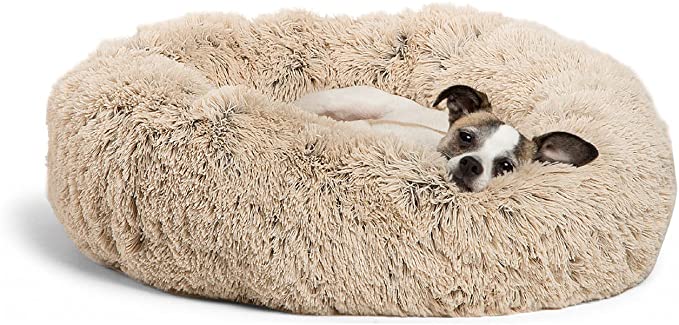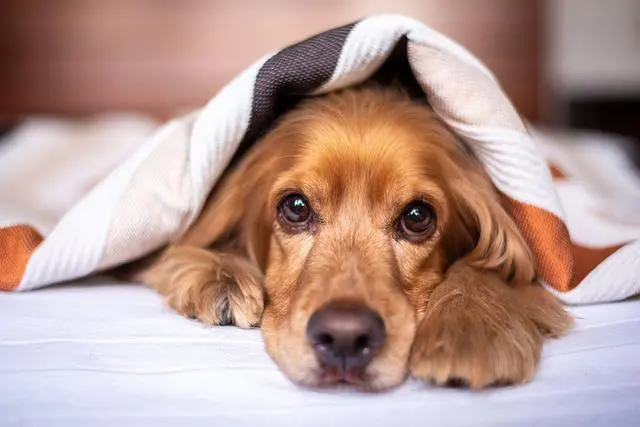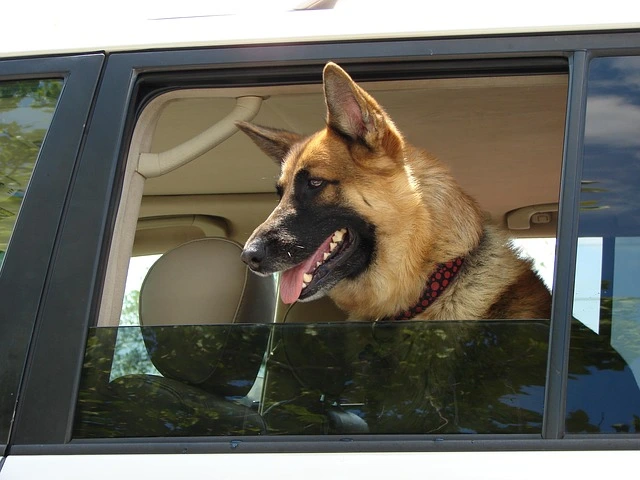A Puppy needs and checklist after adoption
Adopting a puppy or any pet is a life-changing and fulfilling experience. It also entails a great deal of responsibility and attention. When you bring a furry companion into your house, you are promising to care for it for the remainder of its life. You’ll probably need to make some significant lifestyle modifications to accommodate your new companion. You should be aware of your dog’s immediate needs in the first few weeks so that the transition goes as smoothly as possible. Here are some suggestions for what to do next when you’ve adopted a new puppy, whether you’re bringing a new puppy into your home or you are a first-time adopter.
Get him checked by the vet
It’s time to take your newly adopted four-legged pal to the veterinarian for a wellness exam once you’ve gotten them established in their new home. This not only helps to build a great relationship with the veterinary clinic but also ensures that your newly adopted puppy is healthy and fit.
Gather his supplies
Before you bring him home, gather everything you’ll need to keep your furry pup safe and happy. You’ll also need snacks, toys, a puppy bed, a pet gate, food bowls, and grooming equipment in addition to the basics—a leash and collar, as well as coats and booties if it’s winter. In the early stages of housetraining, it’s also a good idea to keep training pads and enzymatic cleaning on hand in case of mishaps. Some of the major and necessary supplies for puppies are as follows.
- Metal food and water bowls
Stainless steel bowls are the safest bowl for your puppy to eat and drink from and are the easiest to clean. Like some plastics, badly glazed pottery, aluminum, or old ceramic dishes, this substance will not leach potentially harmful chemicals into your dog’s water and meal. Dishwasher-safe stainless steel dog dishes or bowls are the most durable. A non-skid rim on the bottom of these bowls is occasionally used to avoid spills.ACETONE is a stainless steel bowl for pets, it is skid-proof and easy to clean. It is corrosion-resistant and suitable for serving water, wet food, and dry food to your furry companion.

- A sturdy leash and nylon collar
A conventional 6-foot Nylon or leather leash is the best dog leash to use. You can choose between nylon and leather. However, avoid using other materials like cotton or rubber because they aren’t as long-lasting or sturdy. Nylon, especially for pups, is a fantastic material for a simple everyday collar. They are light, so dogs of all sizes can wear them without any irritation or discomfort.For your furry baby, the Beebiepet 2 Packs Classic Dog Collar is a terrific option. It’s a traditional collar with a clasp. If the dog pulls, the leash will not tighten. Having said that, it is a very lovely durable collar for your beloved puppy.

- Identification tags for the collar
It can keep your four-legged partner from being relinquished to shelters, where he or she may be adopted into a new family, or from languishing in a cage for years, waiting for you to discover them. A suitable identification tag can help your furry friend to return to you much faster if they accidentally get separated from you. Id collars are great for new bone puppies since they help you identify amongst other puppies. Each collar is constructed of ultra-soft and high-quality nylon that is gentle on your puppy’s delicate skin.EXPLORE is a comfortable ID collar with a writable tag, safe color, and you have the option of choosing any eye-catching and vibrant color.

- A crate pillow or snuggle nest
When your dog is in their crate, it’s often a good idea to provide them with a comfortable place to rest and sleep. Although some prefer to burrow in a nest made out of their bedding and some dogs like less padding. However, If you’re going to put something in with young puppies, you need to make sure it’s chew-proof, waterproof, and should not be dirty or rough. Best friends by Sheri calming dog beds are made with pet-safe material, they are easy to clean and soft enough to provide comfort to your puppy.

- Bristle comb
Bristle brushes or combs are great for all coat types of dogs since they smooth fur, remove mats or knots and disseminate healthy skin oils, resulting in glossy fur. A bristle brush will generally suffice to remove loose hair from a short-haired dog. Margot’s pet grooming kit helps to keep your dog’s coat in a good look. These brushes will help in removing dead hair and giving their coat that smooth feel and lovely shine.
Assign a safe space for him
Make the same private space for your new puppy as you would for existing pets. Some pet owners dislike dog crates, however, Best Friends Animal Society claims that dogs regard them as their own resting space, similar to a den. They also provide a haven for them to acclimate to their new surroundings. Use a pet fence to create a separate room for your animal pal if you don’t want to use a crate. You are welcome to pay him a visit to aid in the bonding process, but for some time children and other pets should remain outside.
Show your dog around the house
Keep your puppy on a leash while allowing him to investigate and sniff around inside. You should show your animal pal his bed, toys, and food, and use brief but firm orders like “sit “, “come” or “leave it” to let him know what’s forbidden.
Introduce to the family
It’s best to introduce the new canine to your family members, close friends, and other pets one at a time. Try to keep other dogs on leashes and observe their interactions, bearing in mind that an overly aggressive introduction may cause them to become territorial with the newcomer. You should keep children from kissing or embracing the new puppy(no matter how cute he is), but let them sniff and treat the furry pup.
Switch your dog’s food slowly
You might decide to feed your new puppy a different diet than the one he had at the shelter. So, if you want to switch your dog’s food, there are a few things you should be aware of. Gastrointestinal upset and diarrhea can occur when a dog’s diet is unexpectedly changed, as well as stress. To avoid unpleasant side effects such as vomiting or nausea, carefully transition your dog to a new food.
For a few days, it’s best to feed your puppy the same food that he was fed at the shelter or rescue. Then gently introduce the new puppy food while progressively decreasing the amount of the old food until you’ve completely shifted to the new food. It’s advisable to seek advice from your veterinarian on the appropriate food for your furry partner.
Begin training right away
Mature dogs that have been housebroken in the past will also need some proper house training to develop into well-behaved and obedient dogs. If you wish to crate train your four-legged friend, start by introducing him to his crate and practicing leaving him in it with a toy for brief periods. Do you want your pup to learn how to obey commands in a structured way? Even so, you should begin working with him right away to establish the ground rules.
When house-training your dog, as with any other type of dog training, it’s crucial to keep reasonable expectations in mind and be consistent and patient. A house-trained dog may have accidents if he’s shifted to a new house. The newness might overwhelm dogs, causing them to become disoriented. With tasty treats and praises, both home and walking regulations should be enforced
Puppy proofing
- To protect the puppy from choking on small items like paper clips, rubber bands, coins, or jewelry, put them away.
- Try to keep all sharp-edged instruments and objects out of reach of your puppy. Razors, knives, scissors, blades, and other instruments fall under this category.
- Trash cans should be secured. Dogs are attracted to rubbish odors, which can irritate their stomachs or even be harmful to them.
- Avoid placing drugs on low tables, bathroom counters, or night tables where the puppy may readily access them, even if they are in pill bottles or dispensers. So, put all medications in a safe place.
- Close the toilet lids to prevent the puppy from drinking from or falling into the toilet.
- All poisonous houseplants should be moved out of the puppy’s reach.
- Unplug electrical cords, hide them with cord concealers, or move them out of the way. Mouth burns or electric shock are possible side effects of chewing hazards.
- Feeding your pup on the table scraps should be avoided at all costs. When puppies may appear charming while begging for food, many human foods are unhealthy and even poisonous for them. Chocolate, raisins, garlic, chewing gums, fast food, and other items that are particularly toxic to dogs should be avoided at all costs.
- Close any windows and gates to prevent the puppy from escaping or falling out, and tie the wires that lift the blinds so they don’t become tangled around your furry friend’s neck.
- Never leave your new puppy alone with a child. Turning your head to answer the phone for even a second is impossible, always try to supervise them. The type of child-dog relationship we see on TV is a dream, not a depiction of how real canines interact with children, especially before proper training and socialization.
Develop a proper feeding Schedule
As he transitions from his old home, or even litter, to his new home surroundings, your new puppy will already be dealing with a lot of change. A simultaneous diet change is the last thing you need. One strategy to reduce the stress of the transition is to keep the puppy’s meals consistent. To help you through the first few days after you bring your puppy home, ask for a type or sample of the food he’s been eating.
To grow healthily, your puppy requires a completely balanced and consistent diet. The first year of his existence is important for his teeth, bones, muscles, and fur to develop properly. Read the labels and look for a food that has been designed specifically for a puppy’s protein and fat requirements. The feeding schedule and portion size should be found on the food package.
Three measured nutritional meals per day, preferably at the same time every day, are required for your puppy’s meal plan. Your puppy’s first meal should be around 7 a.m, lunch should be around noon, and dinner should be fed around 5 p.m. The food should be a puppy-specific diet that is well balanced, nutritious, and healthful for your animal pal. You can also serve the following foods to your puppies in moderate amounts.
- Greek Yogurt
- Lean proteins such as beef and chicken(without adding any seasonings or sauces)
- Peanut butter ( make sure it’s free of sugar, salt, and xylitol)
- Sliced apples ( remove the seeds first)
- Watermelon( remove the rinds and seeds before serving)
- Sweet potatoes
- Rice ( plain and cooked white or brown rice)
- Corn
- Bread ( plain white or whole grain bread)
- Pasta (without adding pasta sauce)
What not to feed a puppy
Raw meat and bones are not suggested since they cause intestinal obstructions and can break the teeth of your pup. Pups may fall ill because raw bones can contain bacteria, so they should be avoided. If you do decide to serve bones, make sure they’re uncooked and introduce them slowly. The bone must be large enough for the puppy to not be able to swallow the entire bone. Hard marrow bones, ‘chop’ bones (such as lamb cutlets), large knuckle bones, T-bones, and bones sawed lengthwise should all be avoided. Request alternatives to bone chewing, such as cow hearts, from your butcher. When your puppy is chewing on bones, keep an eye on him. Table scraps, large snacks, and bones should never be given to your puppy between meals.
What to feed your new puppy?
You can serve cooked meat, such as lamb or boiled chicken, but they should not contain cooked bones, garlic, onions/onion sauces, flavors, or other poisonous elements. To encourage your new puppy or dog to consume his dry food, add some water to it or mix a little wet food into it. Continue doing this as you gradually reduce the amount of water or wet food they consume until they are completely dry. The permanent teeth of the pup develop and grow rapidly between four and six months of age. Puppy-specific food or kibble, healthy chewable snacks, and Puppy-specific chew toys can help to reduce “teething” problems and redirect your pup’s interest away from chewing on household things. You should consider the following factors before feeding a meal to your dog.
- Age of your new dog
Puppies of all breeds are undergoing a period of growth and tremendous development. Puppy-specific formulations are best for them, as they often contain high levels of protein to sustain their growing bodies and high energy needs. Whereas to maintain a healthy bodily condition, adult dogs require fewer calories and protein than puppies.
- Breed’s size of the new dog
The requirements of large and small-breed dogs vary. Formulas that maintain a healthy body and support muscle and joint health are optimal for large breed dogs. Puppies of large breeds such as Great Dane and French Mastiff can also benefit from food that has been specially prepared to satisfy their specific growth and nutritional requirements. Kibble meant big and medium-breed dogs may be difficult to chew for small breed dogs because of their small mouths. Smaller kibble pieces make it easier to chew in small breed recipes.
- Level of activity of your new dog
To meet their energy needs and grow lean muscle, very active and working dogs require high-protein dog food. Because idle dogs consume less energy, they require less fat, calories, and protein.
It’s crucial to read the labels on the dog or puppy food packages when choosing the correct food for your furry partner. Flip the bag over and look at the ingredient list once you’ve selected a recipe that matches your dog’s activity level, life cycle, and breed size. By content weight, all of the ingredients are given in ascending order.
Walk your pup daily
Make sure your dog is wearing a dog collar with dog ID tags before you leave the house with him. Walk your puppy at least twice a day for 20- 30 minutes, ideally at the same time every day to build a habit. Taking your puppy for a walk is crucial for his mental and physical stimulation.



